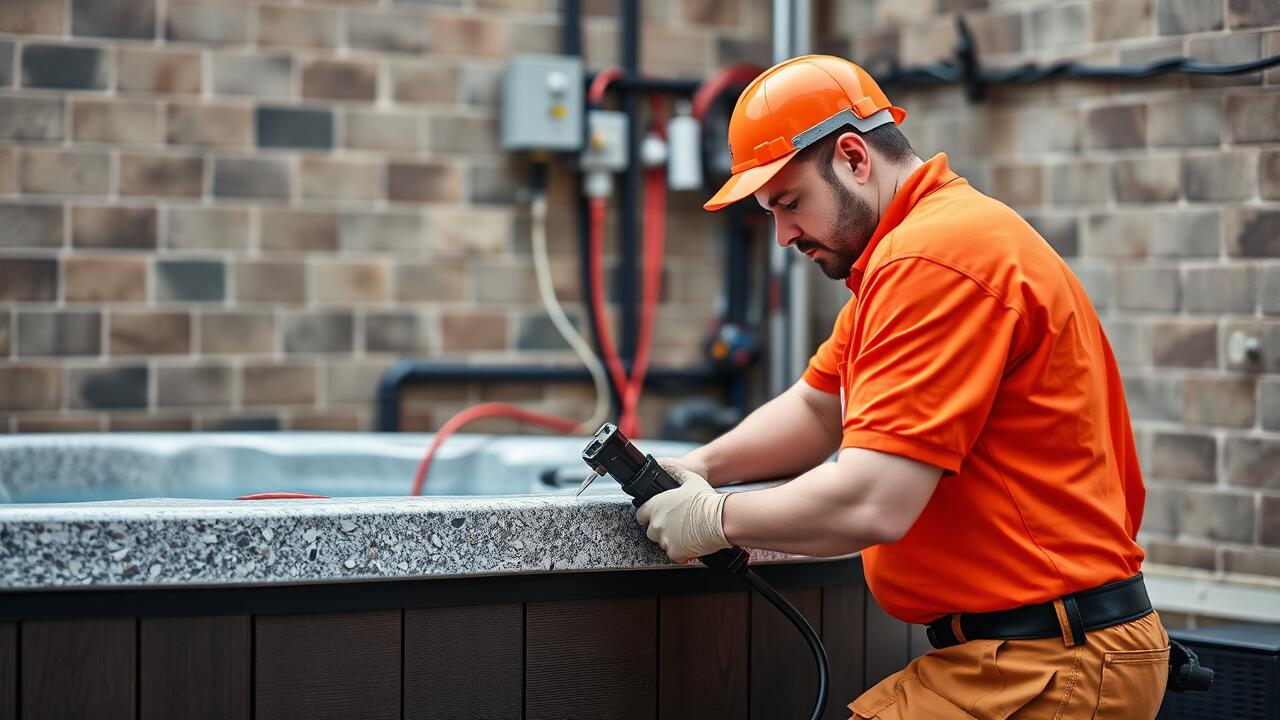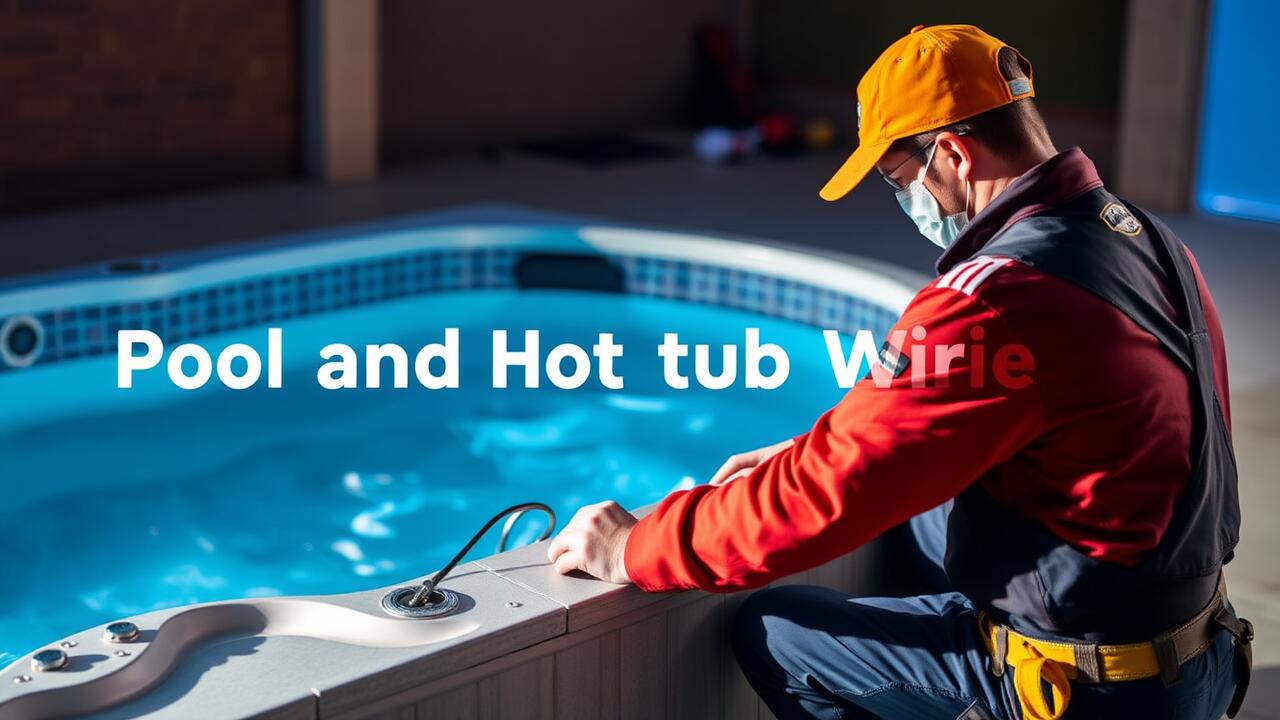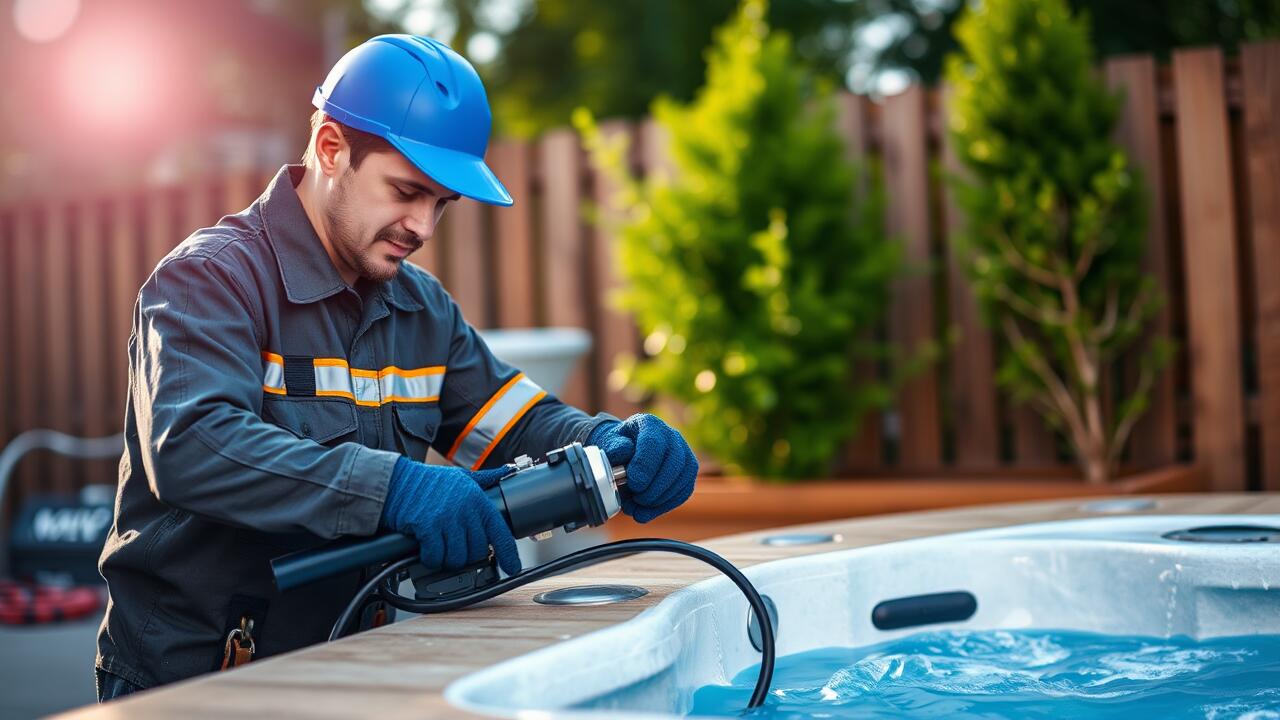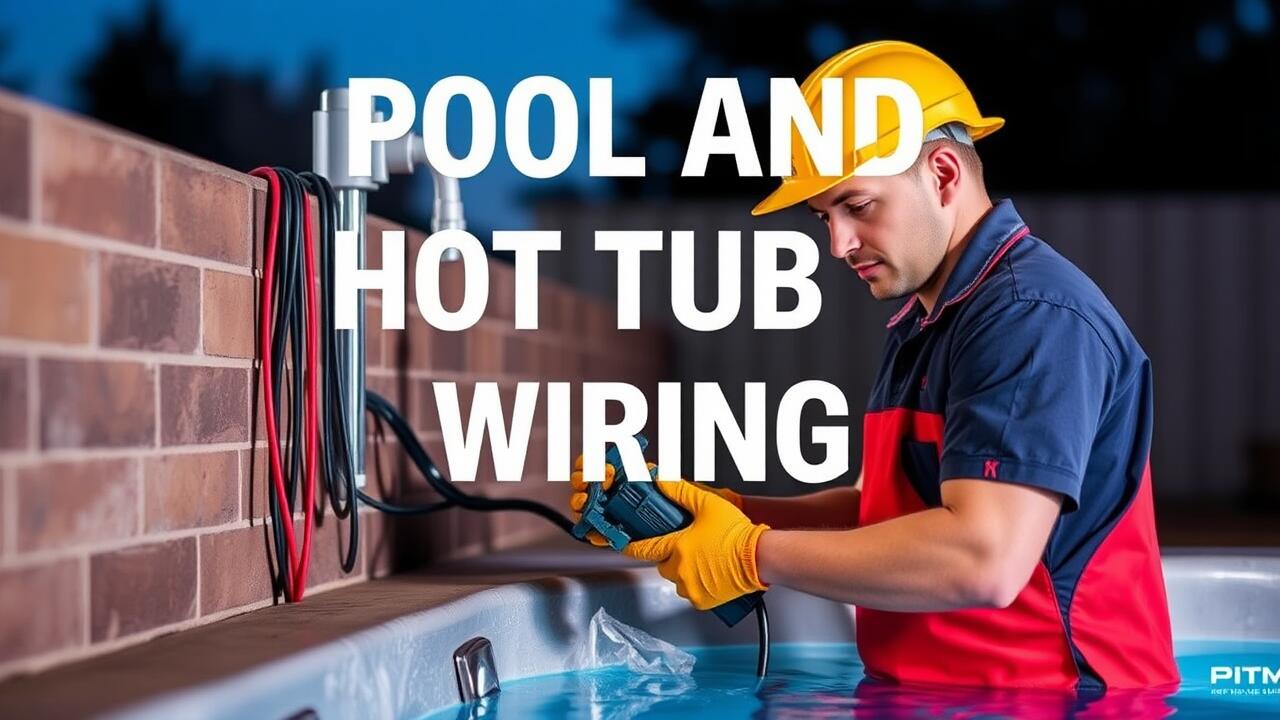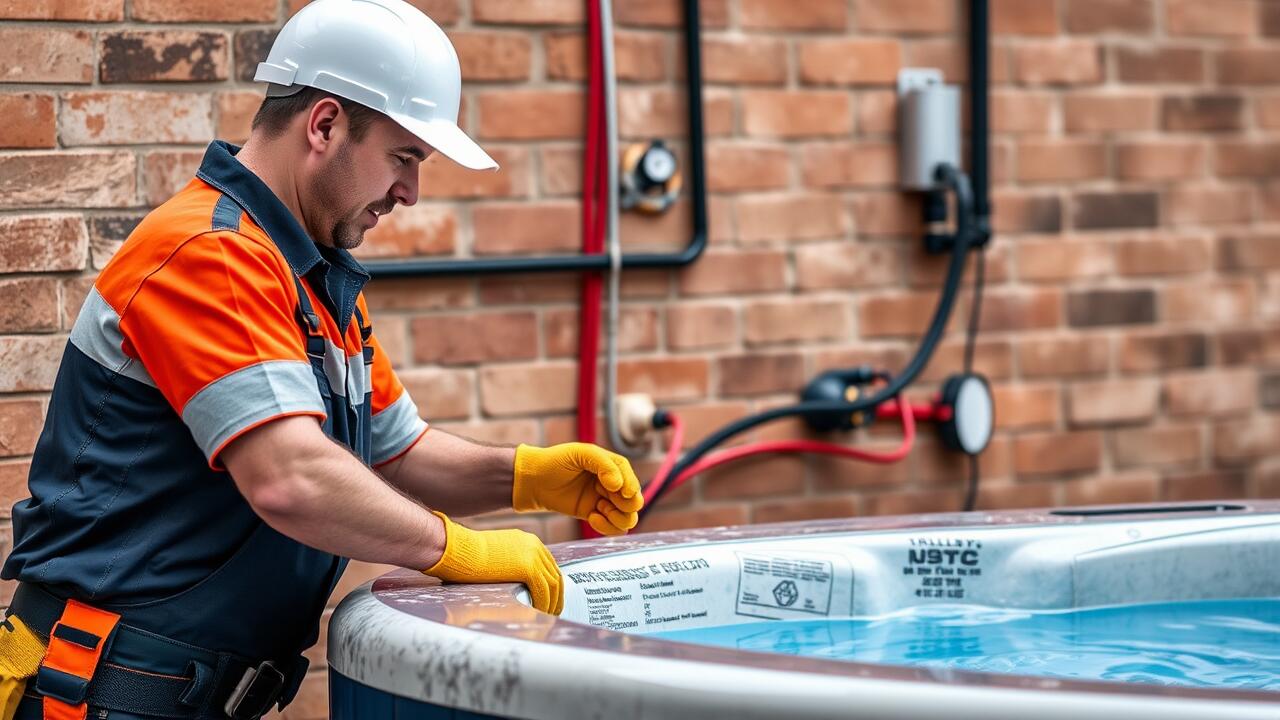
Common Mistakes to Avoid in Wiring Depth
When planning the installation of a hot tub, one common mistake is failing to consider the depth of the wiring. Local codes often specify minimum depths to ensure protection against ground movement and accidental damage. Ignoring these requirements can lead to hazardous situations and costly repairs. Always consult with local regulations and hire professionals to avoid cutting corners.
Another frequent oversight involves not accounting for the specific type of wiring needed for the installation. The use of substandard cables may lead to overheating and system failures. Investing in the right materials ensures safety and longevity for the hot tub setup. For residents seeking assistance, searching for "Pool and Hot Tub Wiring near me" can help identify qualified electricians familiar with industry standards and local codes.
Ensuring Proper Placement and Connections
Proper placement and secure connections are critical when wiring a hot tub. The location of the electrical supply must comply with local codes to ensure safety and functionality. Environmental factors such as proximity to water sources are key considerations. Conducting a thorough assessment of the installation site helps to determine the best routing for wires while minimizing potential hazards.
When completing the wiring, connections should be made with high-quality materials to prevent future issues. Ensuring that all connections are watertight can help avoid corrosion and electrical failures. Homeowners often search online for "Pool and Hot Tub Wiring near me" to find qualified electricians familiar with local regulations. This approach can facilitate a safe and effective installation process, allowing for years of enjoyment with minimal maintenance concerns.
Inspecting Existing Wiring Before Installation
Before installing a hot tub, it's essential to thoroughly inspect existing wiring. This step helps ensure the current setup can handle the additional load that a hot tub demands. Look for any signs of wear or damage to the wiring, including frayed insulation or corrosion. Confirm that the wiring configuration meets local electrical codes to prevent hazards and ensure the safe operation of the hot tub. If problems are found, addressing them before installation will save headaches later.
It's also beneficial to evaluate whether the existing electrical system has adequate capacity. Hot tubs require a significant amount of power, which may exceed the limits of older or insufficient wiring. Assess the amperage and voltage to ensure they align with the needs of the hot tub. Hiring a licensed electrician familiar with "Pool and Hot Tub Wiring near me" can provide peace of mind and ensure compliance with regulations. Taking these steps can lead to a safer and more efficient installation.
Identifying Potential Issues with Current Setups
When considering the installation of a hot tub, examining existing wiring setups is crucial. Issues may arise from outdated wiring that does not meet current safety codes or power requirements. Homes built several decades ago may not support the electrical needs of modern hot tubs. This could lead to insufficient power supply or potential safety hazards, including overheating or electrical fires.
Homeowners should look for signs such as frayed wires, corrosion, or other damage that may compromise the integrity of the electrical system. Consulting a professional for an evaluation is advisable. They can assess if the existing wiring can handle the load or if it needs to be upgraded. Performing a quick search for "Pool and Hot Tub Wiring near me" can help locate licensed electricians equipped to handle these specific requirements and ensure a safe installation.
Upgrading Electrical Systems for Hot Tubs
Upgrading electrical systems for hot tubs often involves assessing the existing infrastructure to ensure it can handle the increased load. Hot tubs typically require dedicated circuits that can safely power both the heater and the jets. It is crucial to verify that the electrical panel can accommodate the additional amperage. Consulting with a certified electrician can help identify any necessary upgrades, ensuring compliance with local codes and safety standards.
When searching for professional assistance, many homeowners look for "Pool and Hot Tub Wiring near me." This search can yield local experts who specialize in electrical installations for water features. Engaging a qualified electrician familiar with hot tub requirements can streamline the installation process. This ensures that all connections are secure and properly grounded, which is vital for safe operation.
Ensuring Adequate Power Supply and Infrastructure
A hot tub requires a reliable power supply to operate safely and efficiently. Homeowners must assess their current electrical systems to determine if they can support the additional load. It is essential to evaluate the electrical panel capacity and ensure there are sufficient dedicated circuits for the hot tub. Professional electricians often recommend upgrading to a higher amperage if necessary. This step not only guarantees that the system can handle the demands of the hot tub but also prevents potential overload issues, which could lead to safety hazards or equipment damage.
When considering a hot tub installation, it is wise to invest time in researching "Pool and Hot Tub Wiring near me." Hiring a licensed electrician with experience in hot tub setups guarantees compliance with local codes and regulations. These professionals can provide insights into proper wiring techniques and help select the right materials for the installation. Their expertise ensures that the infrastructure can accommodate both current needs and future upgrades, promoting long-term functionality and peace of mind for hot tub users.
FAQS
What is the recommended wiring depth for hot tub installations?
The recommended wiring depth for hot tub installations typically ranges from 18 to 24 inches, depending on local codes and regulations. Always check with local authorities for specific requirements.
What are some common mistakes to avoid when determining wiring depth?
Common mistakes include not verifying local codes, neglecting to account for soil type, and failing to ensure that wiring is buried at the correct depth to avoid damage or interference.
How can I ensure proper placement and connections for my hot tub wiring?
To ensure proper placement and connections, use weatherproof junction boxes, secure all connections tightly, and follow the manufacturer's guidelines alongside local electrical codes.
What should I inspect in existing wiring before installing a hot tub?
Before installation, inspect existing wiring for signs of wear, corrosion, or damage. Make sure the wiring is sufficient to handle the load required by the hot tub and verify that it meets local safety codes.
How do I upgrade my electrical system to accommodate a hot tub?
Upgrading your electrical system may involve installing a new circuit breaker, ensuring adequate power supply, and reinforcing infrastructure like wiring and grounding to meet the hot tub's electrical demands. Always consult a licensed electrician for guidance.
